
Miskatonic University
On The Edge of the Miskatonic Campus
Well, um, Brown University actually. Lovecraft didn't attend Brown, in fact he didn't graduate from high school. He was a sickly child, although it's unclear how much was physical illness and how much was psychosomatic.
Guesthouses at Booking.com KawaiiI had booked a room at the Michie House at 230 Thayer Street, on the northeast corner of the Brown University campus. It was just south of the intersection of Thayer and Angell Street, at the far end of the two-story brick building at right below. The J Life Mart across Thayer provides everything kawaii, of extreme cuteness, that one might need. For academic matters, the Brown University Bookstore was right across Angell Street.

I liked staying there! I didn't totally understand what was going on, I think that most of the other people were students there for a full semester at least, but that didn't matter. I had my own room for three nights with a bed and a desk and a window overlooking the J Life Mart and the Angell/Thayer intersection, and there was a shared kitchen and a shared bathroom down the hall.
Just beyond the south corner of the building, the far end in the above picture, was the chthonic East Side Transit Tunnel built in 1914 for trolleys and now used for public transit buses. It runs underground for six blocks, providing a gentler 4–5% grade with no stoplights or other traffic, versus the 10% grade and traffic and signal lights of the public street.
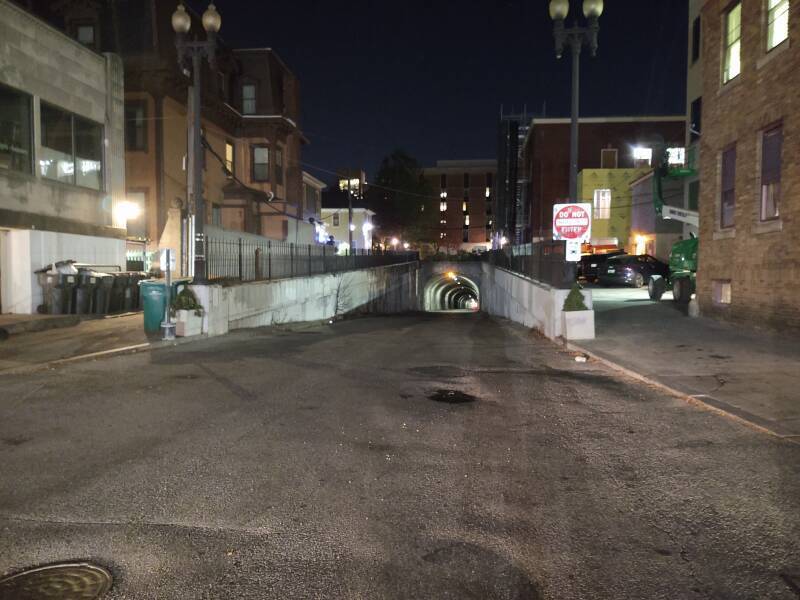
I name it as Poe and Lovecraft would have, gratuitously using the word chthonic despite its redundancy in addition to its archaic nature. It's an old-fashioned way of saying "underground", which a tunnel by definition already is. They would have used it just because it was already outdated in their times.
The tunnel is meant for city buses only, but especially in the evenings you see students zipping through it on skateboards and bikes.
The Founce House is the student activities building, at right here. It has a nice coffee shop in the basement along with dining opportunities.
Beyond it, at center, is Hope College, actually a dormitory. At left is Manning Hall, which now houses the Museum of Anthropology.

University Hall, at right below, was the first university building constructed on the east side of Providence. The core of it was completed in 1771.
At left is Slater Hall, which was the university's second dormitory and still serves as one.
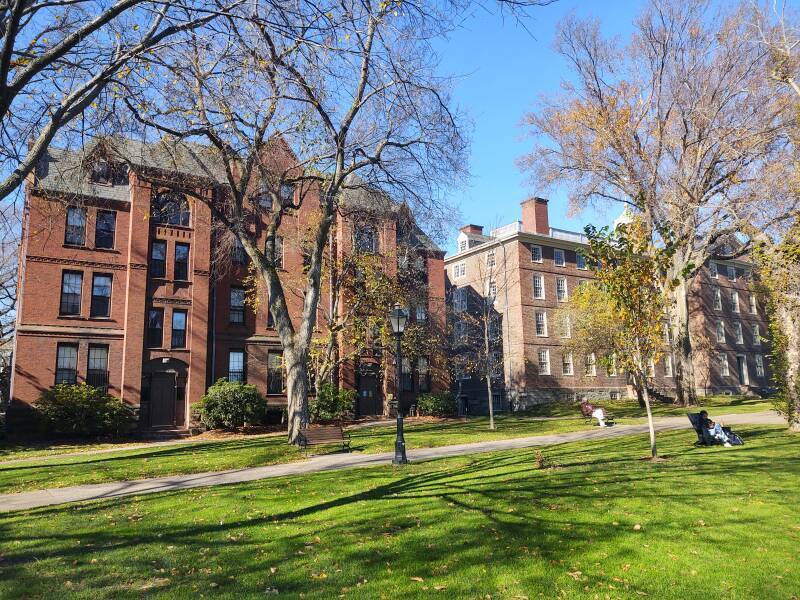
Sayles Hall, at left below, is used for various purposes. A grand hall used for commencement dinner includes a large pipe organ. There are many classrooms, and offices for various departments.
Friedman Hall, at right, houses chemistry.
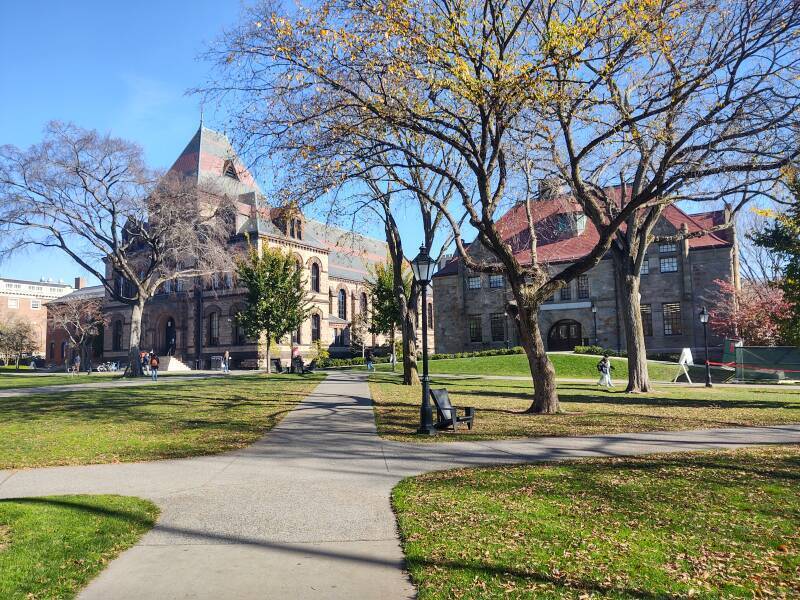
Wilbour Hall houses the Department of Egyptology and Assyriology. I'm impressed by any university that has such a department.
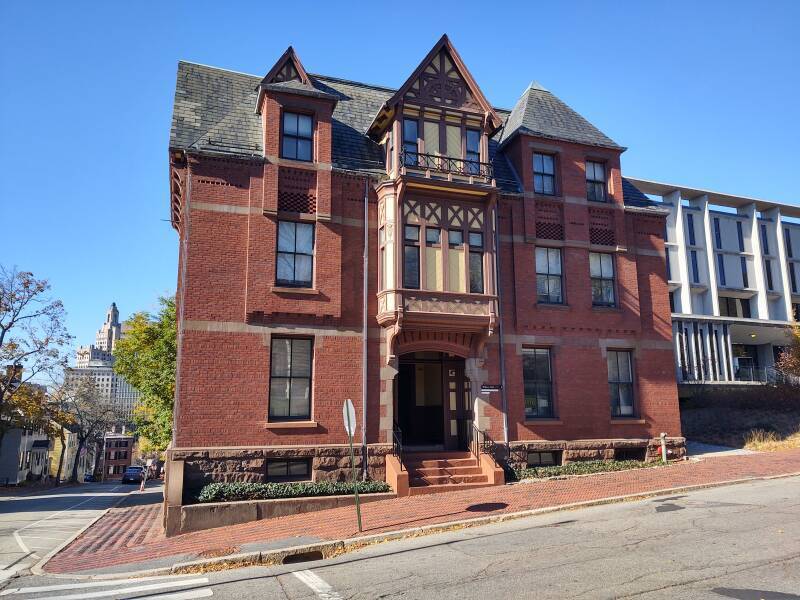
Professor Emeritus George Gammell Angell undoubtedly had an office here, as I found no Department of Semitic Languages on the campus map.
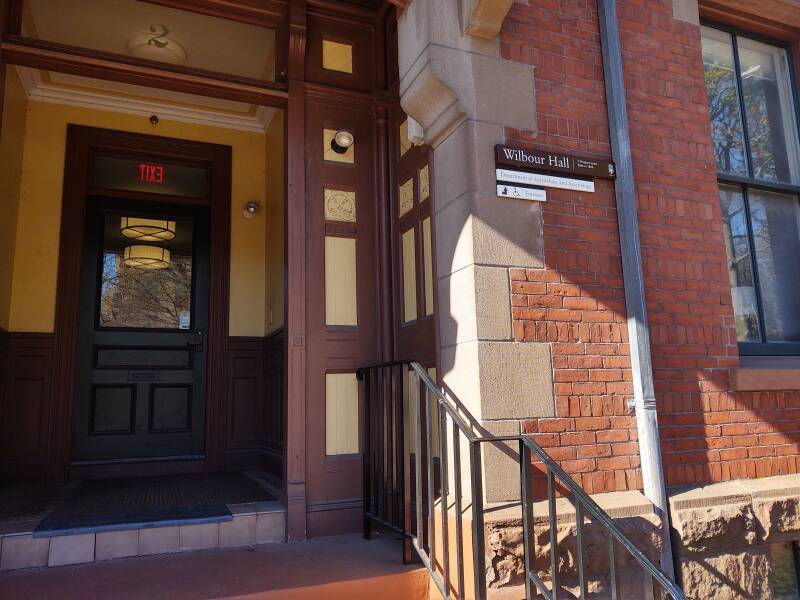
The John Hay Library is at 20 Prospect Street, just outside the fence enclosing the central campus area. Lovecraft's last home was directly behind the library, down the hill to the left here.
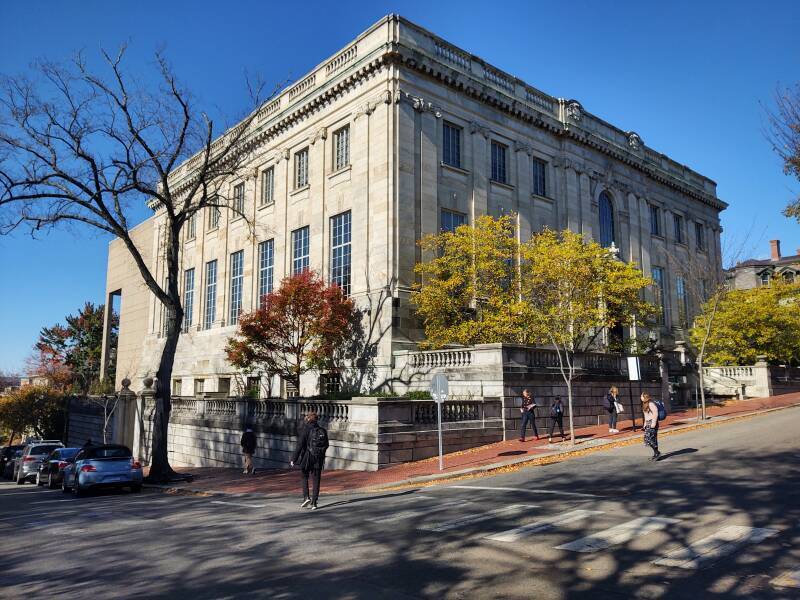
The John Hay Library houses Brown's rare books and manuscripts and the special collections. These include the Henry David Thoreau Collection, the George Orwell Collection with the original manuscript of Nineteen Eighty-Four, a Shakespeare First Folio, a first edition of Walt Whitman's Leaves of Grass with inscriptions by Whitman and Oscar Wilde, T. S. Elliot's copy of The Great Gatsby, and a science collection with a book annotated by Galileo and the first two editions of Copernicus's De Revolutionibus.
The John Hay Library also has four anthropodermic books. Yes, that's a Greek-based name saying that they're bound in human skin. None were originally bound in human skin, all were rebound for private collectors during the 19th century, and two are editions printed in the 1890s. They were donated in the 1960s as gifts from two Brown alumni. Otherwise Lovecraft surely would have examined them and incorporated them in stories.
And no, none of them are the Necronomicon of Abdul Alhazred, because there isn't really such a thing. Nor does the Hay hold a copy of the Comte d'Erlette's Cultes des Goules, Ludvig Prinn's De Vermis Mysteriis, the Unaussprechlichen Kulten of von Junzt, the Eltdown Shards, the frightful Pnakotic Manuscripts, or the puzzling Book of Eibon. All of them are fictitious, dreamed up by Lovecraft or other authors in his circle of correspondents.
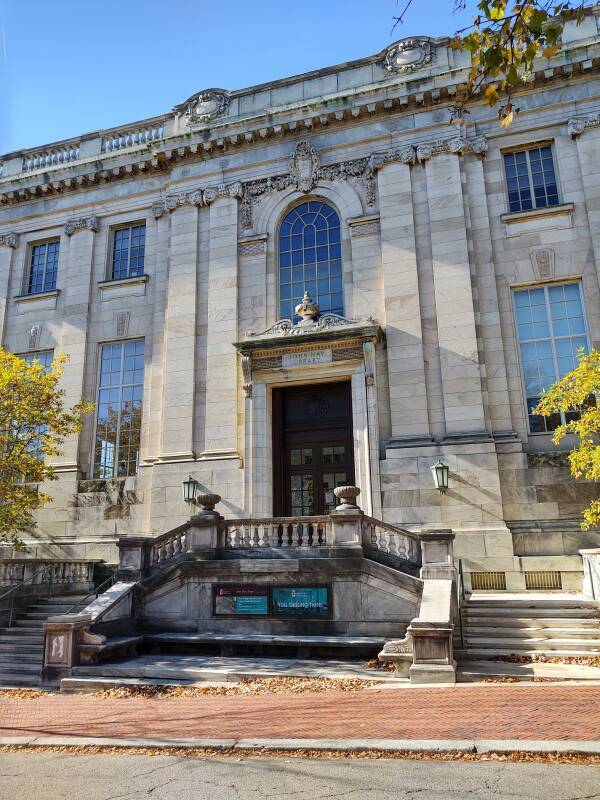
Most of Lovecraft's original manuscripts are stored here in the special collections.

A plaque outside the library was installed on the 100th anniversary of Lovecraft's birth.
I never can be tied to raw, new things,
For I first saw the light in an old town,
Where from my window huddled roofs sloped down
To a quaint harbour rich with visionings.
Streets with carved doorways where the sunset beams
Flooded old fanlights and small window-panes,
And Georgian steeples topped with gilded vanes—
These were the sights that shaped my childhood dreams.
— Sonnet XXX, Background, from Fungi from Yuggoth, December 1929 —January 1930.
At the John Hay Library
The John Hay Library also has a significant collection of Silver Age comic books.
One time in New York I took a series of pictures and created a series of web pages explaining the Fictional Architecture of New York. One of the locations is 177(A) Bleecker Street, for a while home of prolific comics author and editor Roy Thomas. He lived there in 1963 when he developed the character of Doctor Strange, and when he needed a location for the Sanctum Sanctorum, the home of the Sorcerer Supreme, he used his own address in Greenwich Village.
Pretty soon after I created that page, Roy contacted me! He wanted to use the picture I had taken of his old apartment building in Alter Ego, his Silver Age comics 'zine. Well, of course! You'll send me a copy of the issue, right? Of course!
After receiving the Alter Ego issue and seeing what the publication was like, I wondered if he would be interested in a piece about what you can see today of the locations depicted in Fantastic Four #4 from 1962, definitely within the Silver Age. Yes!
"When the Sub-Mariner was a Bowery Bum"Flophouses, Dormitories, and SROs
Namor the Sub-Mariner was one of Marvel's very first characters, created in 1939 as an agent of chaos and the first comic book anti-hero. But then with the U.S. entry into World War II, Namor joined Captain America in fighting the Axis. The comic book Sub-Mariner began appearing less and less often after World War II, ceasing publication around 1949.
Namor returned in that 1962 Fantastic Four issue, with his discovery as an amnesiac living in a Bowery flop house. Former flophouses, or really SROs or Single-Room Occupancy hotels to be precise, can be quite nice places to stay. I was frequently inhabiting, and had photographed, just such a place.
I was in Providence in late 2022 when the Alter Ego issue with my article was going to press, and the Marvel movie Wakanda Forever introducing Namor into the Marvel Cinematic Universe was coming out. What timing!
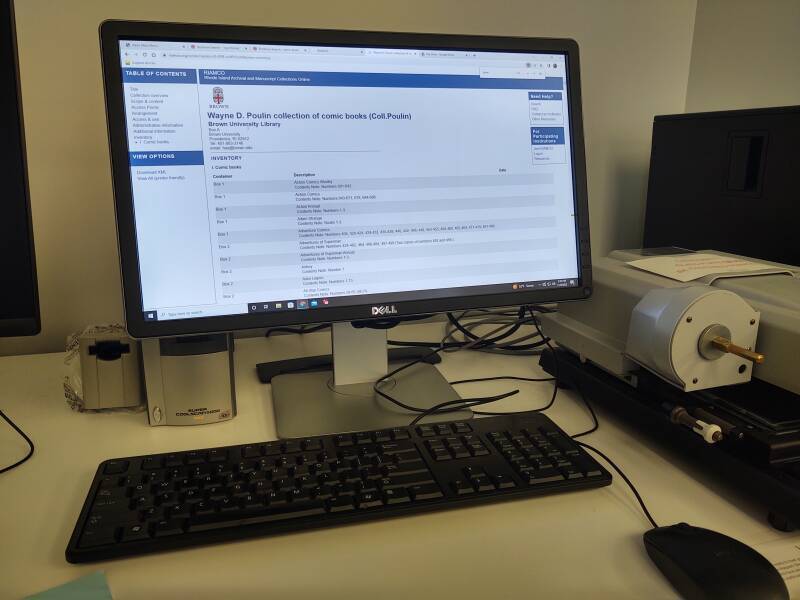
I got registered as a research in the special collections and did some initial research into just what the Hay's immense Silver Age collections actually entail.
Linuxand other
open-source
projects
This wasn't totally unfamiliar, as I had done research at the Folger Library in Washington, D.C., the largest collection of Shakespeare-related material in the world. I had done that after the Folger's Director of Digital Collections had taken the Linux server course that I had written, and happened to be teaching that week. He asked, "Oh, you do consulting work? Would you be interested in doing some work at the Folger?" Yes!
I was there initially helping them through a PCI-DSS review as they accept credit and debit cards in their bookstore and theatre ticket office. Then some work with a Solaris-to-Linux transition, data de-duplication, and other work.
Cryptography At theFolger Library
Then I got registered as a researcher to examine some of the 16th and 17th century cryptography books in their collection, including A New Method of Cryptography Humbly Presented to the Most Serene Majesty of Charles II by Sir Samuel Morland, 1666; Wit's Interpreter, or The English Parnassus by John Cotgrave, 1655; and De Furtivis Literarumnotis Vulgo de Ziferis by Ioan Baptista Porta, 1591.
The first of those is a classic example of a cryptographic system beautifully presented at enormous expense, whose complexity presents unusual difficulty for the legitimate users while providing worse security.
The procedures at the John Hay Library's Special Collections research room were familiar. Although it isn't in a Tudor style grand hall like the Folger's.
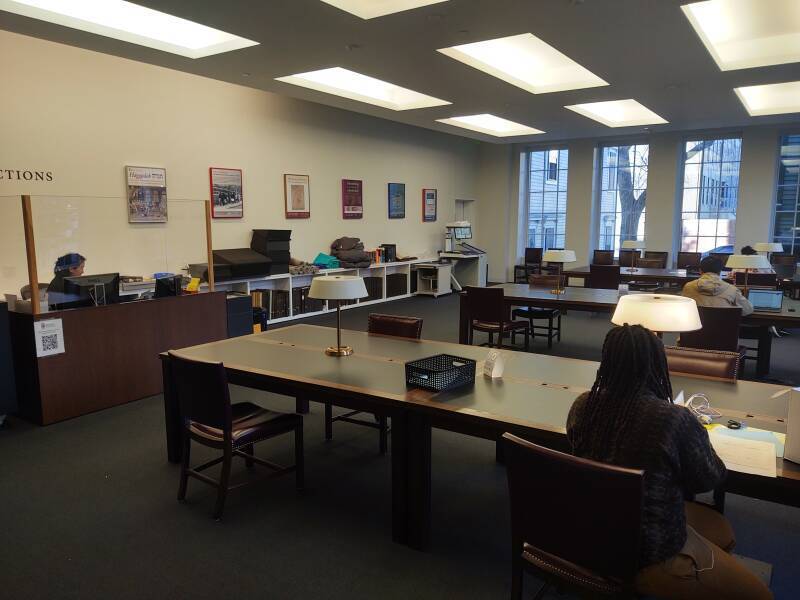
Now to examine one remaining mystery in Providence.
